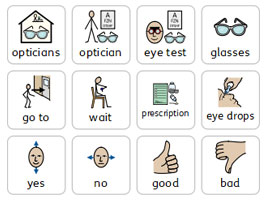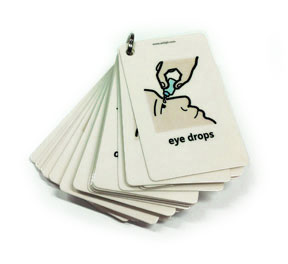- You are here:
- Home
- About Symbols
- Introduction to Symbols
- How symbols are used
Introduction to Symbols
How symbols are used
Symbols can help support:
- Communication
Symbol communication books and devices can help people make choices and express themselves. - Independence and participation
Symbols aid understanding which can increase involvement, choice and confidence. - Literacy and learning
Symbol software encourage users to "write" by selecting symbols from a predetermined set in a grid. - Creativity and self expression
Writing letters and stories and expressing your own opinions. - Access to information
All of us need accessible information and this should be presented in such a way that the reader can understand and use.
Common ways to use symbols
Symbol Sentences
One of the most common ways to use symbols is in symbol sentences. This is when a regular sentence has symbols above the words illustrating the main points in the sentence. Not all of the words may have symbols, as abstract symbols are unnecessary and distracting for most symbol readers, but there should be enough symbols to ensure that the meaning can be understood even if the text isn't.

Key symbols
Key Symbols are simply one or two symbols that can be used with or without text to convey a single piece of information. At most, they provide the same amount of information as a short sentence of text. They can help reinforce meaning and give reassurance by acting as reminders for any level of reader.

Communication Grids

Communication Grids typically have one symbol per grid cell alongside the text. The grid can facilitate a conversation with one or more people pointing to the symbols to express their ideas. Communication grids can be printed as low tech supports, or there are high tech communication devices and apps that reinforce the symbol choices with speech output.
Flashcards

Symbol flashcards are cards containing one symbol and text. They have a very wide range of uses. They can be used as educational games to learn a topic, picked from to make choices, ordered to create a timetable and shown to aid communication.
